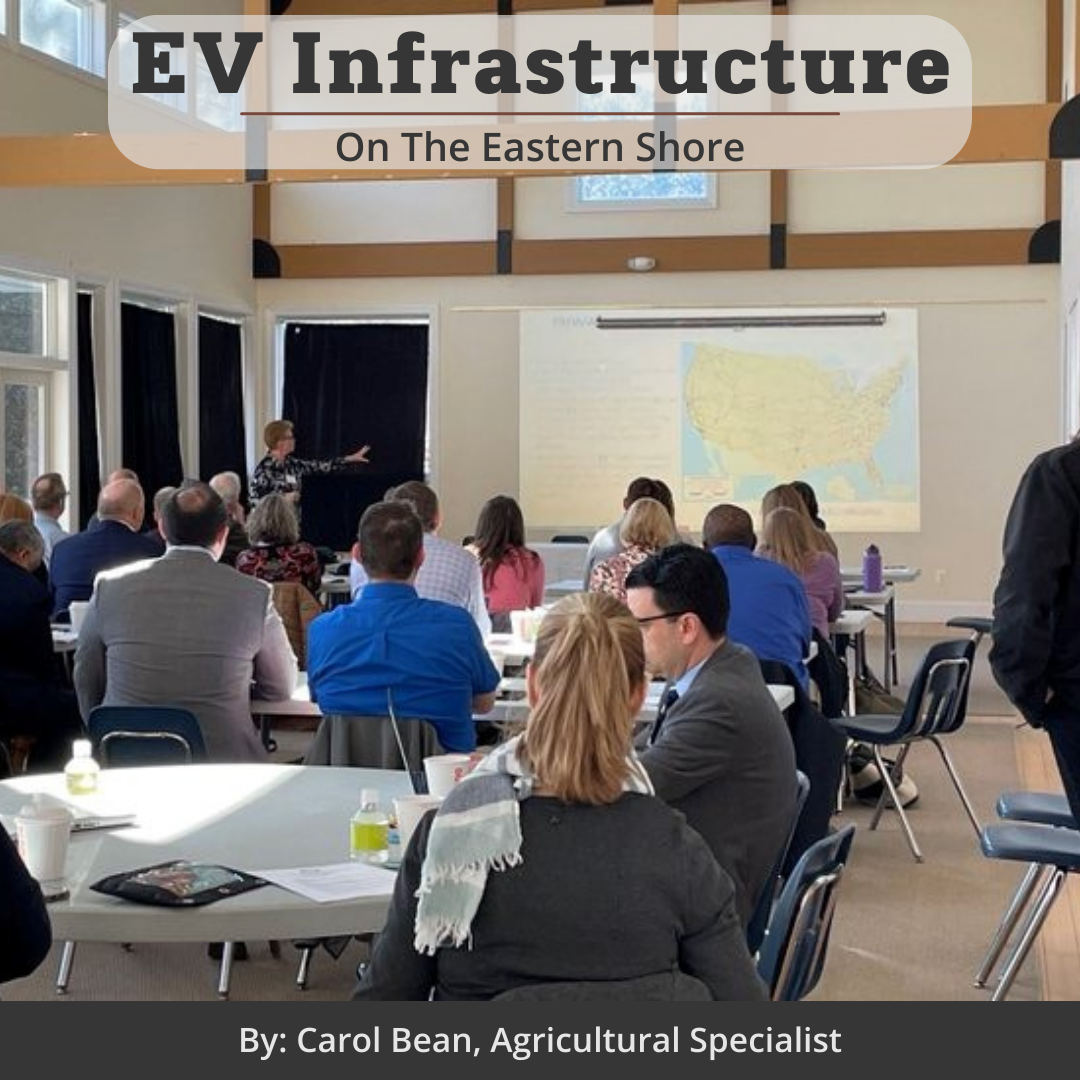Electric Vehicle Infrastructure on the Eastern Shore

According to the EPA, the transportation sector generates the largest share of greenhouse gas emissions (27%) so it makes sense that Maryland has developed ambitious plans to establish and enhance the adoption of electric vehicles within both the public and private sectors. Maryland’s goal is to have 300,000 EVs on the road by 2025, increasing exponentially in the years after, which will mean significant changes to our existing transportation infrastructure in the near future. How can our Eastern Shore counties best plan for, fund and implement these infrastructure changes in a way that honors and maintains the rural character of the region and accounts for the fact that needs in rural areas differ vastly from urban ones?
These were just a few of the questions addressed at the recent Power2Go Electric Vehicle Symposium attended by ESLC. Hosted by the Rural Maryland Council, the Symposium convened federal, state and county officials to gain a fuller understanding of national electrical vehicle infrastructure priorities, discover financing options and opportunities, and explore how to develop electric vehicle (EV) infrastructure in a manner that increases equity and makes historical, cultural and recreational destinations more accessible and potentially more profitable.
There are some existing roadmaps to help navigate the way forward. Maryland’s plan for National Electric Vehicle Infrastructure (NEVI) was approved in September, which unlocks the door to approximately $63 million in federal funding. The plan identifies 23 alternative fuel corridors focused on EVs which will provide the backbone of infrastructure build-outs in the state. On the Eastern Shore, routes 50 and 301 are confirmed corridors with a planned expansion to integrate route 13. According to the MDOT officials at the Symposium, route 50 is being considered for the first round of funding.
With the clock ticking, how ready are our counties and communities for the coming changes? As the use of electric vehicles increases, so will the corresponding impacts on land use. Counties need to consider if zoning changes are needed, what requirements – if any – will be mandated for new public and private development projects, what codes will need to be updated and any changes to existing permitting processes. Even though we are at the formative stage of shifting towards vehicle electrification, attention must also be given now to such things as battery recycling and disposal.
The symposium highlighted many resources which can provide guidance to our counties as they navigate a future with more EVs. The U.S. Department of Transportation developed Charging Forward: A Toolkit for Planning and Funding Rural Electric Mobility Infrastructure which offers planning, partnership and financing guidance and importantly points out that while only 20% of the nation’s population lives in rural America, these areas comprise 70% of the road infrastructure. Getting it right in rural America is going to look much different than the urbanized and suburbanized parts of the country.
On the Eastern Shore, our rural landscape is a prized possession and significant driver of both the agricultural and tourism economy. Are there best practices we should be adopting now to safeguard scenic views and historic landmarks? Scenic America, a leading national nonprofit, proposed guidelines for electric vehicle charging infrastructure while simultaneously preserving the scenic beauty of our rural areas.
There is no doubt that land-use on the Eastern Shore is changing – and will continue to change – in response to accelerated efforts to advance national climate and sustainability goals. This represents both an opportunity and a challenge for the region. Click here to view all symposium resources so that you can stay up to date and join ESLC in advocating for our Eastern Shore.






